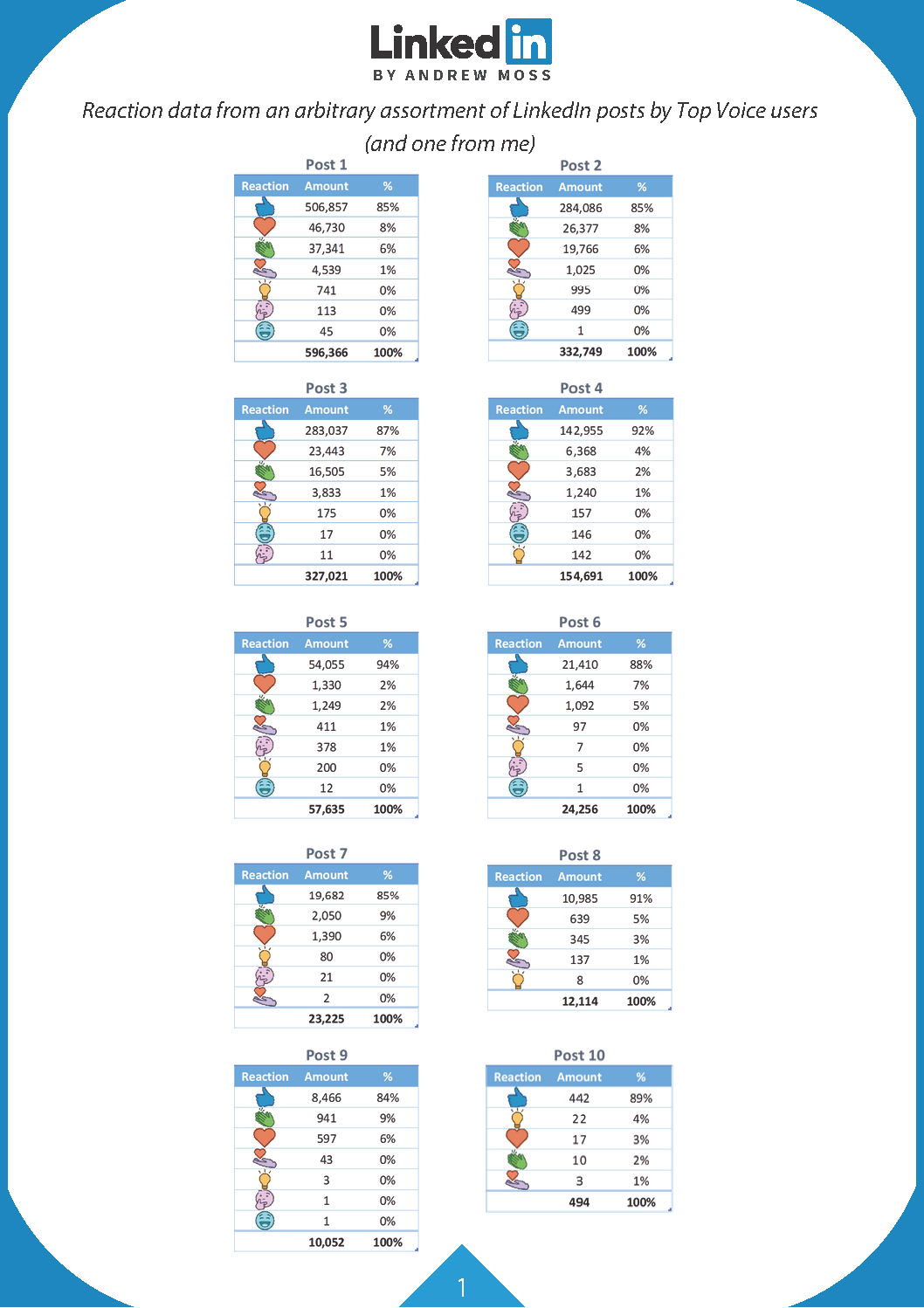LinkedIn reaction bias

Let’s talk about reactions.
Facebook started the trend in 2016, when they unveiled five alternatives to the ‘Like’ we were all accustomed to: ‘Love’, ‘Haha’, ‘Wow’, ‘Sad’, and ‘Anger’.
This was a response to the long-standing demand for a ‘Dislike’ button. Wary of its potential misuse, Facebook sidestepped the idea but came up with a nuanced way for people to express themselves.
Three years later, LinkedIn joined the party with their ‘Celebrate’, ‘Love’, ‘Insightful’, and ‘Curious’. And at the height of the COVID-19 pandemic, both platforms aptly added ‘Care’ (Facebook) and ‘Support’ (LinkedIn).
More recently, LinkedIn rolled out ‘Funny’ to signify it was truly veering away from its ‘suited and booted’ reputation.
Despite reactions existing for a while, they haven’t caught on as one might envisage.
I analysed an arbitrary assortment of LinkedIn posts by Top Voice users (plus one from me) and found that ‘Like’ overwhelmingly dominates the share by 84–94% (page 1). The average was 88.
This isn’t surprising. After all, you only have to click or tap the ‘Like’ button beneath a post to register the reaction. On mobile devices, you can even double-tap an image if it has one.
Surely, if reactions are to be a useful tool for gauging post sentiment, their usage must be far greater.
Take a celebratory post, for example, whether it’s a new job, recent graduation, or personal achievement. These cry out for a tidal wave of ‘Celebrate’ reactions; however, I’ve not seen a single one dominated by them.
What’s the solution? For starters, get rid of the ‘Like’ bias so there’s parity across the board. That means disabling the aforementioned one-click, one-tap, and double-tap actions, and making reacting a two-step process.
One possible solution is a randomised reaction wheel (page 2). Users would be forced to hover, click or tap on a button to reveal the reactions in an inconsistent order. This would help reduce ‘blind liking’ and encourage users to contemplate whether one of the six other reactions is appropriate before reverting to the standard ‘Like’.
I’m interested to know your thoughts. How can reactions be better?
P.S. Don’t ‘Like’ this post!
